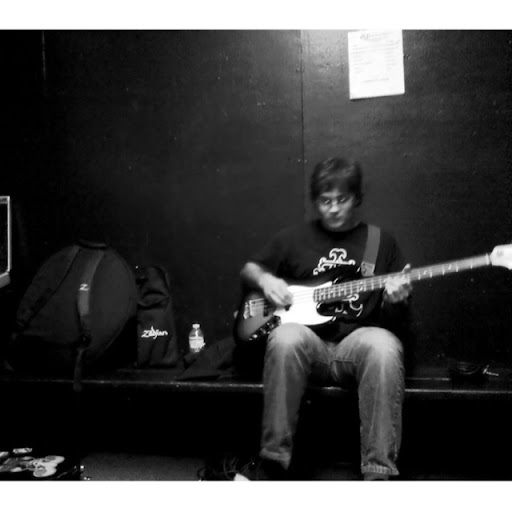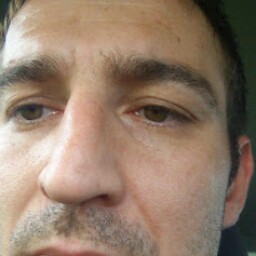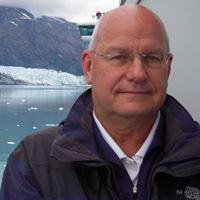Richard C Maier
age ~76
from Hamlin, NY
- Also known as:
-
- Dick Maier
- Rihard C Maler
Richard Maier Phones & Addresses
- Hamlin, NY
- 829 Alpine Thistle Dr, Brooksville, FL 34604 • 9104894588
- Trinity, FL
- Palm Harbor, FL
- Hilton, NY
Resumes

Physician
view sourceWork:
Doctors Anestesia Service of Columbus
Physician
Physician

Quality Systems Auditor
view sourceLocation:
829 Alpine Thistle Dr, Brooksville, FL 34604
Industry:
Program Development
Work:
Chapman Tool & Mold
QA Manager
QA Manager
Education:
Monroe Community College 1969 - 1975
Optical Engineering, Optics/Optical Sciences
Optical Engineering, Optics/Optical Sciences
Skills:
Quality Assurance
Injection Molding
Quality System
Manufacturing
Spc
Continuous Improvement
Lean Manufacturing
Six Sigma
Iso
Supplier Quality
Iso 13485
Quality Management
Fmea
Root Cause Analysis
Kaizen
5S
Product Development
Process Improvement
Iso 9000
Plastics
Ppap
Quality Auditing
Polymers
Extrusion
Ts16949
Injection Molding
Quality System
Manufacturing
Spc
Continuous Improvement
Lean Manufacturing
Six Sigma
Iso
Supplier Quality
Iso 13485
Quality Management
Fmea
Root Cause Analysis
Kaizen
5S
Product Development
Process Improvement
Iso 9000
Plastics
Ppap
Quality Auditing
Polymers
Extrusion
Ts16949
Interests:
Football
Grandkids
Exercise
Home Improvement
Shooting
Reading
Gourmet Cooking
Sports
Watching Basketball
Golf
Hockey
Watching Hockey
Home Decoration
Watching Sports
Photograph
Cooking
Cruises
Outdoors
Electronics
Education
Environment
Baseball
Crafts
Fitness
Music
Dogs
Human Rights
Movies
Collecting
Kids
Joggin
Diet
Cats
Walking
Travel
Watching Baseball
Social Services
Investing
Traveling
Television
Basketball
Animal Welfare
Sports Memorabilia Collecting
Watching Football
Grandkids
Exercise
Home Improvement
Shooting
Reading
Gourmet Cooking
Sports
Watching Basketball
Golf
Hockey
Watching Hockey
Home Decoration
Watching Sports
Photograph
Cooking
Cruises
Outdoors
Electronics
Education
Environment
Baseball
Crafts
Fitness
Music
Dogs
Human Rights
Movies
Collecting
Kids
Joggin
Diet
Cats
Walking
Travel
Watching Baseball
Social Services
Investing
Traveling
Television
Basketball
Animal Welfare
Sports Memorabilia Collecting
Watching Football
Certifications:
Asq Auditor
Asq
Asq

Richard Maier
view source
Richard Carol Maier
view source
Richard Maier
view source
Richard Maier
view source
Richard Maier
view sourceLocation:
United States
License Records
Richard M Maier
License #:
27213 - Active
Category:
EMS Licensing
Issued Date:
Jan 24, 2016
Expiration Date:
Jun 30, 2018
Type:
EMT-Intermediate Technician (AEMT)
Richard Alan Maier
Address:
5502 Legend Hl Ln, Spring Hill, FL 34609
License #:
SL442329 - Expired
Category:
Real Estate
Issued Date:
Jan 7, 1985
Effective Date:
Oct 1, 2016
Expiration Date:
Sep 30, 2016
Type:
Sales Associate
Richard R Maier
License #:
LS130007A - Expired
Category:
Real Estate Commission
Type:
Cemetery Salesperson-Standard
Isbn (Books And Publications)


Comparative Animal Behavior: An Evolutionary and Ecological Approach
view sourceAuthor
Richard Maier
ISBN #
0205199852
Name / Title
Company / Classification
Phones & Addresses
TANGO MIKE PROPERTIES, LLC
SNAP VECTOR CONSULTING, LLC
DELTA ROMEO ANESTHESIA CONSULTING, LLC
DELTA ROMEO CONSULTING, INC
Director
Paulmaier Enterprises, Inc
Business Services
Business Services
19124 Ctr Rose Blvd, Lutz, FL 33558
22 N High St, West Chester, PA 19380
22 N High St, West Chester, PA 19380
Principal
MAIER LAND SURVEYING, PC
Surveying Services · Land Surveyor
Surveying Services · Land Surveyor
183 Huffer Rd, Hilton, NY 14468
PO Box 344, Hilton, NY 14468
539 Manitou Rd, Hilton, NY 14468
Rochester, NY 14468
5853926134
PO Box 344, Hilton, NY 14468
539 Manitou Rd, Hilton, NY 14468
Rochester, NY 14468
5853926134
Managing
A & R Operations, LLC
19124 Ctr Rose Blvd, Lutz, FL 33558
Us Patents
-
Xerographic Development System, Method For Determining When The Developer Material Supply Should Be Replenished
view source -
US Patent:6374064, Apr 16, 2002
-
Filed:Sep 25, 2000
-
Appl. No.:09/669198
-
Inventors:Roger W. Budnik - Rochester NY
James M. Pacer - Webster NY
Scott L. Kauffman - Rochester NY
Richard M. Maier - Rochester NY -
Assignee:Xerox Corporation - Stamford CT
-
International Classification:G03G 1508
-
US Classification:399 27, 399 29, 399 30, 399 49
-
Abstract:In a xerographic development system, a primary developer supply is used to develop electrostatic latent images. A secondary developer supply is available to dispense new developer, as needed, into the primary developer supply. A series of inputs, including counting the number of printed pixels and monitoring the reflectivity of a set of test patches, is entered into an algorithm which controls the dispensing of new developer. The various inputs are converted into metrics which relate to an amount of time fresh developer is dispensed into the primary developer supply.
-
Edge Enhancement Scavenging Device
view source -
US Patent:6400921, Jun 4, 2002
-
Filed:Apr 26, 2001
-
Appl. No.:09/843481
-
Inventors:Gerald Scott Leclerc - Webster NY
Richard M. Maier - Rochester NY -
Assignee:Xerox Corporation - Stamford CT
-
International Classification:G03G 1508
-
US Classification:399266, 399296
-
Abstract:An apparatus for developing a latent electrostatic image on a charge retentive surface moving in a process direction with toner, the apparatus comprising: a supply of toner; a donor structure spaced from the charge retentive surface for conveying toner from the supply of toner to an area adjacent the charge retentive surface, a device for applying an alternating current directly to the donor structure to create an alternating electrostatic field between the donor structure and said charge retentive surface to produce a toner cloud adjacent the charge retentive surface for developing the latent electrostatic image thereon; and an edge enhancement device, adjacent to the donor structure, for redistributing toner on the developed latent electrostatic image.
-
System For Determining Development Gap Width In A Xerographic Development System Using An Ac Field
view source -
US Patent:62858378, Sep 4, 2001
-
Filed:Sep 25, 2000
-
Appl. No.:9/669109
-
Inventors:Roger W. Budnik - Rochester NY
James M. Pacer - Webster NY
Scott L. Kauffman - Rochester NY
Richard M. Maier - Rochester NY
Michael G. Swales - Sodus NY -
Assignee:Xerox Corporation - Stamford CT
-
International Classification:G03L 1508
-
US Classification:399 31
-
Abstract:In a xerographic development system in which an AC field is set up in a gap between a donor member and the photoreceptor to develop an electrostatic latent image, a series of tests are performed to ascertain that the width of the gap is within a suitable range. In test mode, various DC and AC biases associated with the field are systematically altered, and the reflectivities of resulting test images are read. Based on these reflectivity readings, it can be determined if the gap is too wide, such as to cause poor print quality, or too narrow, such as to cause arcing.
-
High-Altitude Compensation For A Xerographic Development System
view source -
US Patent:62664948, Jul 24, 2001
-
Filed:Sep 25, 2000
-
Appl. No.:9/669105
-
Inventors:Roger W. Budnik - Rochester NY
James M. Pacer - Webster NY
Scott L. Kauffman - Rochester NY
Richard M. Maier - Rochester NY -
Assignee:Xerox Corporation - Stamford CT
-
International Classification:G03G 1508
-
US Classification:399 55
-
Abstract:In a xerographic printing apparatus wherein a development field is maintained between the photoreceptor and a donor member, there is always a danger of arcing across the field, particularly at high elevations. An arcing-avoidance system interacts with the print quality control system of a printing apparatus, to monitor the biases within the apparatus being demanded at various times by the control system. If a bias consistent with arcing conditions is approached, the arcing-avoidance system constrains the control system to avoid the arcing conditions. The arcing-avoidance system accepts as an input the elevation of a particular printing apparatus.
-
Print Quality Control For A Xerographic Printer Having An Ac Development Field
view source -
US Patent:62858408, Sep 4, 2001
-
Filed:Sep 25, 2000
-
Appl. No.:9/669179
-
Inventors:Roger W. Budnik - Rochester NY
James M. Pacer - Webster NY
Scott L. Kauffman - Rochester NY
Richard M. Maier - Rochester NY -
Assignee:Xerox Corporation - Stamford CT
-
International Classification:G03G 1500
G03G 1508 -
US Classification:399 49
-
Abstract:In a xerographic development system wherein toner is conveyed from a donor member to a charge receptor by a development field having a DC bias and an AC component, reflectivities of a first test patch having a first target halftone density and a second test patch having a second target halftone density are measured, resulting in first and second possible errors. If the first error and the second error have the same sign, i. e. , both patches are too light or too dark, the errors are substantially cured by altering the DC bias. If the first error and the second error have different signs, i. e. one patch is too dark and the other too light, a different correction strategy is employed.
-
Xerographic Development System, A Method For Predicting Changes In The Ratio Of Toner To Carrier
view source -
US Patent:63210452, Nov 20, 2001
-
Filed:Sep 25, 2000
-
Appl. No.:9/669108
-
Inventors:Roger W. Budnik - Rochester NY
James M. Pacer - Webster NY
Scott L. Kauffman - Rochester NY
Richard M. Maier - Rochester NY -
Assignee:Xerox Corporation - Stamford CT
-
International Classification:G03G 1508
G03G 1500 -
US Classification:399 58
-
Abstract:In a control system for xerographic development, an important value to be monitored in real time is the ratio of toner to carrier (T/C) in the developer supply. However, direct measurements of T/C, whether by magnetometer readings of the developer, or densitometer readings of developed test patches, tend to be noisy. To exclude unusual T/C measurements, after every T/C reading, a likely range of change in T/C is calculated. If a subsequent T/C reading is not within this likely range, the reading is substituted with an upper or lower boundary of the calculated likely range.
Plaxo

Richard Maier
view sourceMachine op. at Kellogg's
Classmates

Richard Maier
view sourceSchools:
Townsend Junior High School Chino Hills CA 2001-2005
Community:
Nancy Castaneda, Summer Talbott

Richard Maier
view sourceSchools:
Pembina High School Pembina ND 1954-1958
Community:
Tamiko Mitchell, Kate Chad, Elaine Lofberg

Richard Maier
view sourceSchools:
Farwell Junior High School Detroit MI 1974-1978
Community:
Yvette Mccutchen, Tony Kotula, Gary Scharmen, Chuck Hengesbach

Richard Maier
view sourceSchools:
Holy Name of Jesus School New York NY 1964-1968
Community:
Dolores Eshenbaugh, Anthony Jones, Raymond Nusspickel, Marilyn Resto

Richard Maier
view sourceSchools:
Harmony Area High School Westover PA 1952-1956
Community:
William Fredo

Richard Maier | Monge Jun...
view source
richard maier | Monge Jun...
view source
Richard Maier | St. Johns...
view sourceYoutube
Myspace
Googleplus

Richard Maier
Work:
Sam's Club - Electronics
Education:
Citrus College - Business, Southlands Christian High School
About:
I love baseballI love musicI love the New York Jets and the New York MetsI hate the YANKEES.
Tagline:
I'm Richard Maier, and I'm an easy going guy living in Southern California. I have no complaints.

Richard Maier

Richard Maier

Richard Maier

Richard Maier

Richard Maier

Richard Maier

Richard Maier

Richard Maier
view source
Richard Maier
view source
Richard Maier
view source
Richard Maier
view source
Richard Maier
view source
Richard Maier
view source
Richard Maier
view source
Richard Maier
view sourceFlickr
Get Report for Richard C Maier from Hamlin, NY, age ~76
















